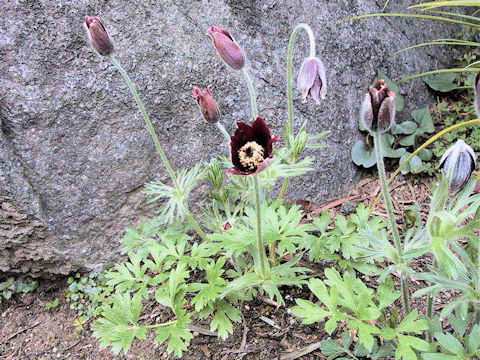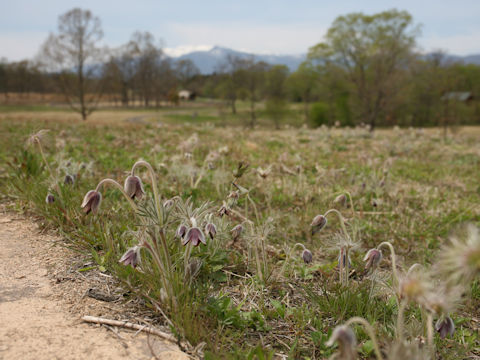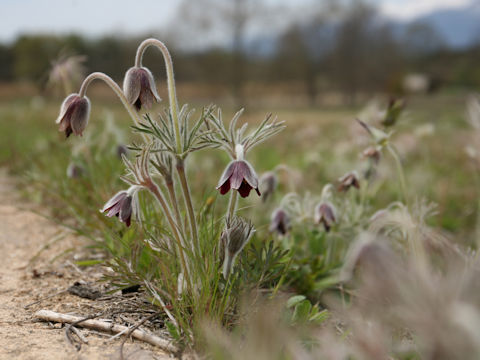
|
|
|
|
−− もっと見る(Show more)−−
−− 閉じる(Close) −−
|
|
|
|
わが国の本州から四国・九州、それに朝鮮半島や中国に分布しています。むかしは丘陵や草原に、ふつうに自生していたといいます。今ではほとんど見られなくなりました。4月から5月ごろ、釣鐘状の花を下向きに咲かせます。花弁のように見えるのは萼片です。果実には白い長い毛があります。和名はこれを翁の頭に見立てたことから。中国名では「朝鮮白頭翁(chao xian bai tou weng)」。 |
|
|
キンポウゲ科オキナグサ属の多年草で、学名は Pulsatilla cernua。英名は Okina-gusa、Nodding anemone。 |
|
|
The "Okina-gusa" (Pulsatilla cernua) belongs to Ranunculaceae (the Buttercup family). It is a perennial herb that is native from Honshu to Shikoku, Kyushu in Japan, as well as the Korean Penninsula and China. This herb was grown commonly in hills and grasslands in former days. Nowadays, it can be almost never found in the wild. The bell-shaped flowers bloom descending from April to May. The corolla has five petaloid sepals. The fruits have white long hairs. The Japanese name is derived from an old man's white hairs. The Japanese name comes from its resemblance to the head of an old man. The Chinese name is "朝鮮白頭翁" (chao xian bai tou weng). |
|
|
[上・中1] 大阪府四條畷市清滝中町にて、2002年04月10日撮影。 [中2] 同上にて、2002年04月25日撮影。 [中3・中4] 大阪市鶴見区「咲くやこの花館」にて、2004年01月23日撮影。 [中5] 同上にて、2005年11月08日撮影。 [中6] 長野市松代温泉にて、2006年05月18日撮影。(photo by Yoko Kitagawa) [中7・中8] 茨城県つくば市「つくば実験植物園」にて、2011年05月04日撮影。 [中9〜中21] 宮城県川崎町「国営みちのく杜の湖畔公園」にて、2021年04月24日撮影。 [中22・下] 宮城県川崎町支倉にて、2022年05月14日撮影。 |

|
|
Shu Suehiro |























